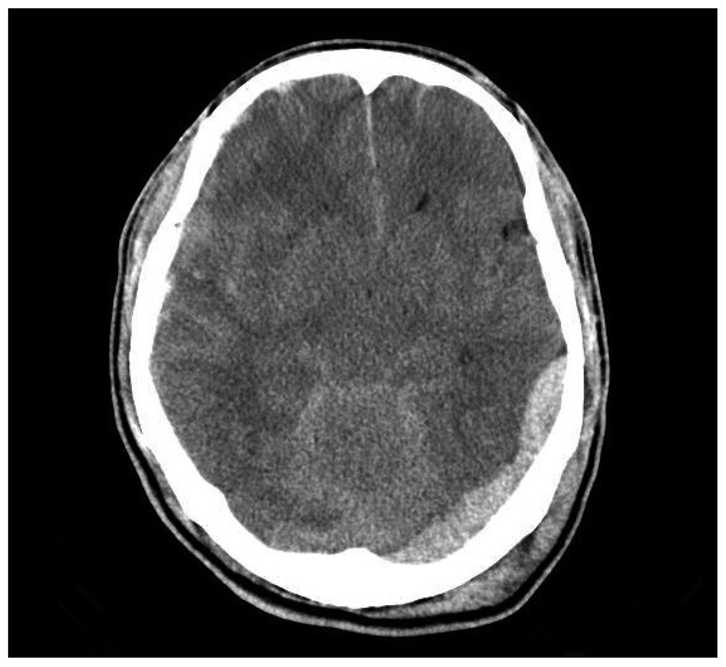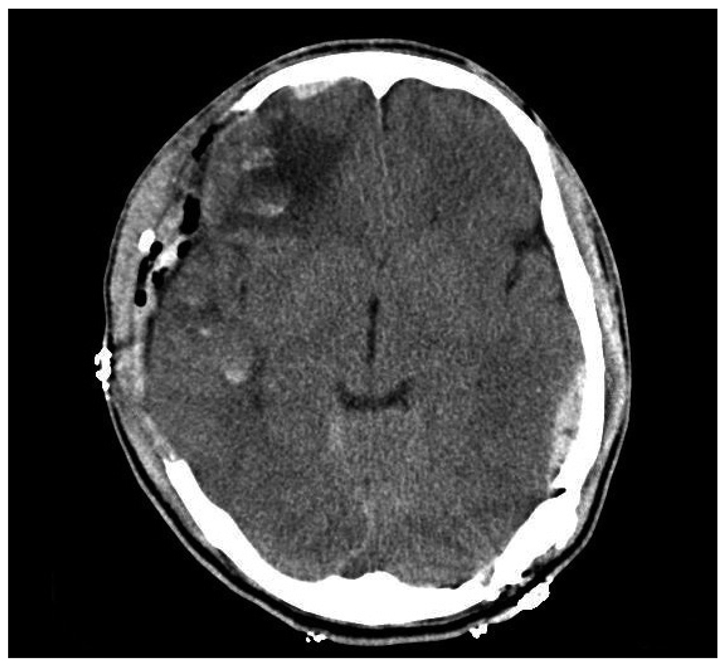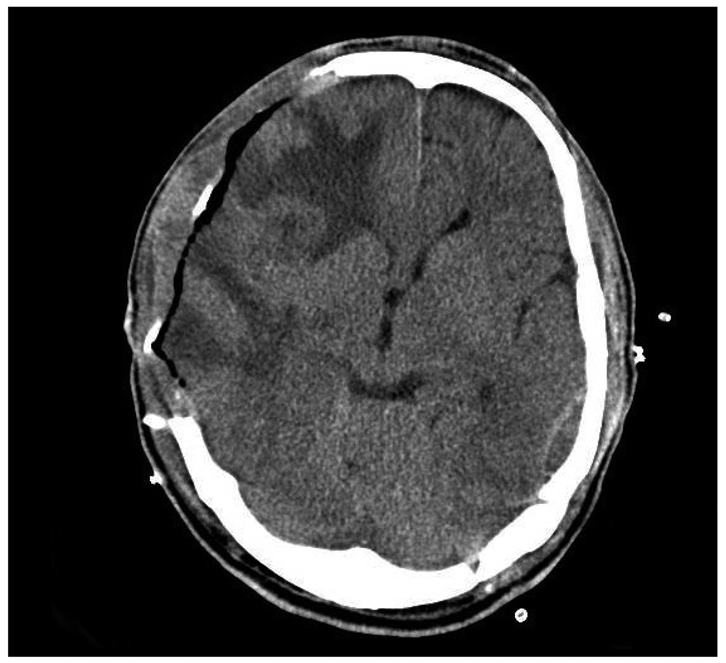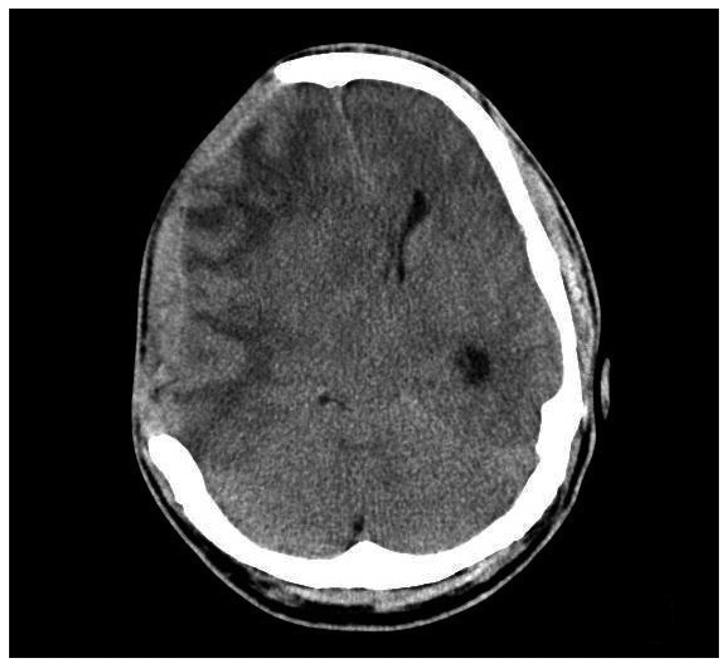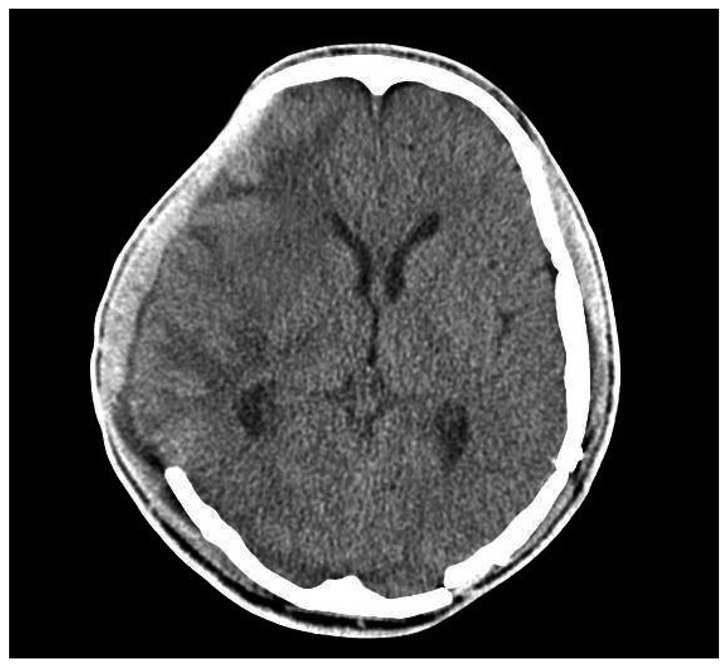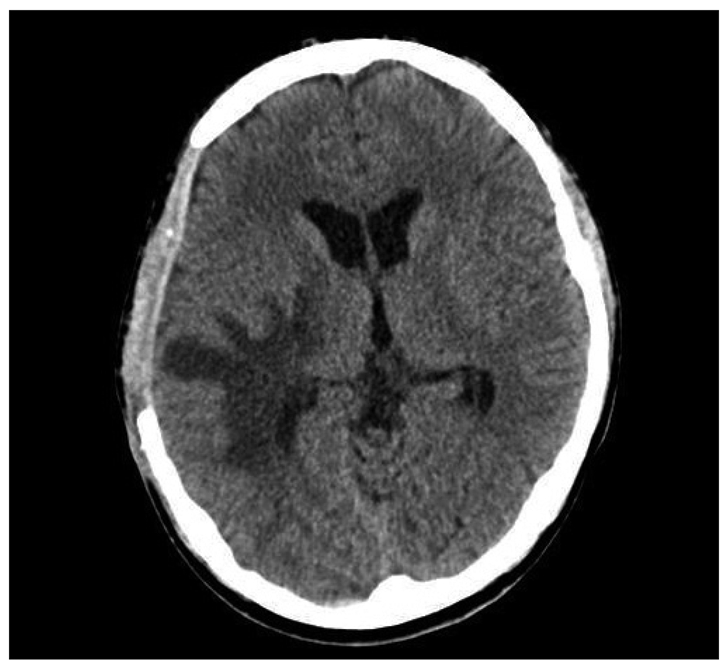J Korean Neurosurg Soc.
2012 Feb;51(2):102-104. 10.3340/jkns.2012.51.2.102.
Paradoxical Transtentorial Herniation Caused by Lumbar Puncture after Decompressive Craniectomy
- Affiliations
-
- 1Department of Internal Medicine, School of Medicine, Chosun University, Gwangju, Korea.
- 2Department of Neurosurgery, School of Medicine, Chosun University, Gwangju, Korea. ns64902@hanmail.net
- KMID: 1441419
- DOI: http://doi.org/10.3340/jkns.2012.51.2.102
Abstract
- Although decompressive craniectomy is an effective treatment for various situations of increased intracranial pressure, it may be accompanied by several complications. Paradoxical herniation is known as a rare complication of lumbar puncture in patients with decompressive craniectomy. A 38-year-old man underwent decompressive craniectomy for severe brain swelling. He remained neurologically stable for five weeks, but then showed mental deterioration right after a lumbar puncture which was performed to rule out meningitis. A brain computed tomographic scan revealed a marked midline shift. The patient responded to the Trendelenburg position and intravenous fluids, and he achieved full neurologic recovery after successive cranioplasty. The authors discuss the possible mechanism of this rare case with a review of the literature.
MeSH Terms
Figure
Reference
-
1. Akins PT, Guppy KH. Sinking skin flaps, paradoxical herniation, and external brain tamponade : a review of decompressive craniectomy management. Neurocrit Care. 2008; 9:269–276. PMID: 18064408.
Article2. Ban SP, Son YJ, Yang HJ, Chung YS, Lee SH, Han DH. Analysis of complications following decompressive craniectomy for traumatic brain injury. J Korean Neurosurg Soc. 2010; 48:244–250. PMID: 21082053.
Article3. Cho H, Kim CH, Kim JH, Kim JM. Paradoxical Herniation after decompressive craniectomy for acute subdural hematoma. J Korean Neurosurg Soc. 2006; 40:51–53.4. Fields JD, Lansberg MG, Skirboll SL, Kurien PA, Wijman CA. "Paradoxical" transtentorial herniation due to CSF drainage in the presence of a hemicraniectomy. Neurology. 2006; 67:1513–1514. PMID: 17060591.
Article5. Fodstad H, Love JA, Ekstedt J, Fridén H, Liliequist B. Effect of cranioplasty on cerebrospinal fluid hydrodynamics in patients with the syndrome of the trephined. Acta Neurochir (Wien). 1984; 70:21–30. PMID: 6741628.
Article6. Liao CC, Kao MC. Cranioplasty for patients with severe depressed skull bone defect after cerebrospinal fluid shunting. J Clin Neurosci. 2002; 9:553–555. PMID: 12383414.
Article7. Oyelese AA, Steinberg GK, Huhn SL, Wijman CA. Paradoxical cerebral herniation secondary to lumbar puncture after decompressive craniectomy for a large space-occupying hemispheric stroke : case report. Neurosurgery. 2005; 57:E594. discussion E594. PMID: 16145506.8. Richaud J, Boetto S, Guell A, Lazorthes Y. [Effects of cranioplasty on neurological function and cerebral blood flow]. Neurochirurgie. 1985; 31:183–188. PMID: 4033856.9. Sakamoto S, Eguchi K, Kiura Y, Arita K, Kurisu K. CT perfusion imaging in the syndrome of the sinking skin flap before and after cranioplasty. Clin Neurol Neurosurg. 2006; 108:583–585. PMID: 15921849.
Article
- Full Text Links
- Actions
-
Cited
- CITED
-
- Close
- Share
- Similar articles
-
- Paradoxical Herniation after Decompressive Craniectomy for Acute Subdural Hematoma
- Efficacy of the Decompressive Craniectomy for Acute Cerebral Infarction: Timing of Surgical Intervention and Clinical Prognostic Factors
- Clinical Analysis of Decompressive Craniectomy for Acute Massive Cerebral Infarction
- Acute Paraplegia Following Lumbar Puncture in a Patient with Cervical Disc Herniation
- Surgical Management of Acute Infarction

